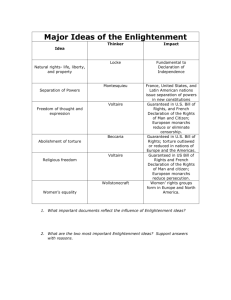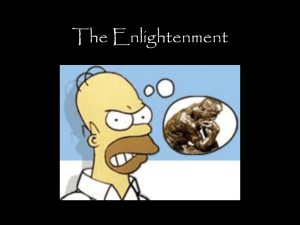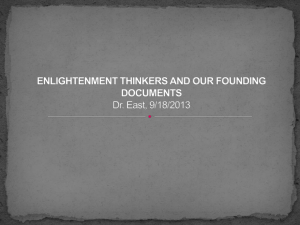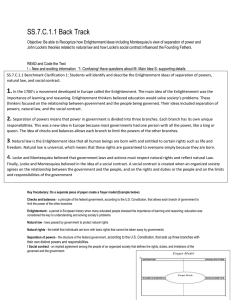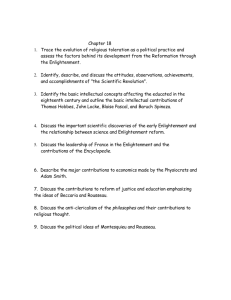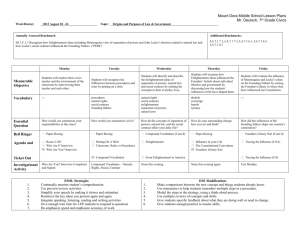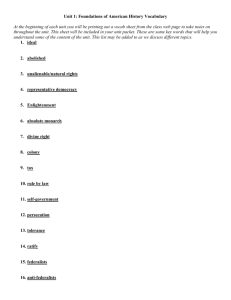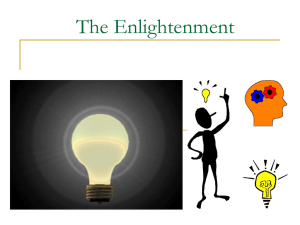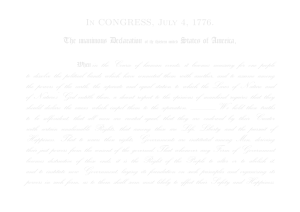Chapter 5 Section 2 Worksheet
advertisement
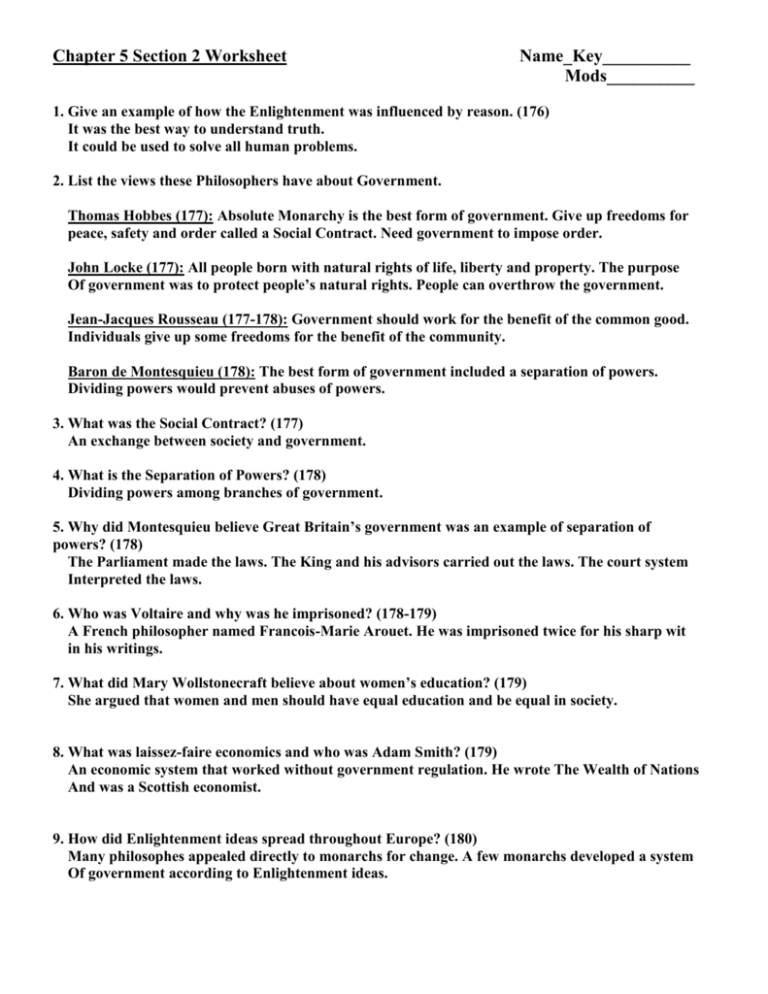
Chapter 5 Section 2 Worksheet Name_Key__________ Mods__________ 1. Give an example of how the Enlightenment was influenced by reason. (176) It was the best way to understand truth. It could be used to solve all human problems. 2. List the views these Philosophers have about Government. Thomas Hobbes (177): Absolute Monarchy is the best form of government. Give up freedoms for peace, safety and order called a Social Contract. Need government to impose order. John Locke (177): All people born with natural rights of life, liberty and property. The purpose Of government was to protect people’s natural rights. People can overthrow the government. Jean-Jacques Rousseau (177-178): Government should work for the benefit of the common good. Individuals give up some freedoms for the benefit of the community. Baron de Montesquieu (178): The best form of government included a separation of powers. Dividing powers would prevent abuses of powers. 3. What was the Social Contract? (177) An exchange between society and government. 4. What is the Separation of Powers? (178) Dividing powers among branches of government. 5. Why did Montesquieu believe Great Britain’s government was an example of separation of powers? (178) The Parliament made the laws. The King and his advisors carried out the laws. The court system Interpreted the laws. 6. Who was Voltaire and why was he imprisoned? (178-179) A French philosopher named Francois-Marie Arouet. He was imprisoned twice for his sharp wit in his writings. 7. What did Mary Wollstonecraft believe about women’s education? (179) She argued that women and men should have equal education and be equal in society. 8. What was laissez-faire economics and who was Adam Smith? (179) An economic system that worked without government regulation. He wrote The Wealth of Nations And was a Scottish economist. 9. How did Enlightenment ideas spread throughout Europe? (180) Many philosophes appealed directly to monarchs for change. A few monarchs developed a system Of government according to Enlightenment ideas. 10. What reforms did Frederick II introduce in Prussia? (180) He established a system of elementary education for all Prussian children. He abolished torture. He supported religious tolerance and reduced censorship. 11. Why did Catherine II NOT free the serfs and bring her reforms to Russia? (181) She quickly realized she would lose the support of the wealthy landowners. 12. What reforms did Joseph II bring to Austria? (181) He eliminated torture and the death penalty. He provided free food and medicine for the poor. He granted religious tolerance to Protestants and Jews. He abolished serfdom. 13. How did the Enlightenment Ideas inspire Revolution? (181) The American colonies used these ideas as inspiration to break free from the British monarchy. They challenged the beliefs in absolute monarchies and the relationship between the church and State and roles and rights of people in society. 14. List the Key Enlightenment Ideas. (181) * The ability to reason is what makes humans unique. * Reason can be used to solve problems and improve people’s lives. * Reason can free people from ignorance, superstition, and unfair government. * The natural world is governed by laws that can be discovered through reason. * Like the natural world, human behavior is governed by natural laws. * Governments should reflect natural laws and encourage education and debate.


